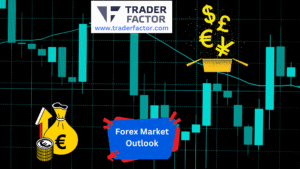The PCE Price Index today holds significant sway over economic forecasts and market movements. As a crucial barometer of inflation, its announcement is eagerly awaited by both investors and analysts, who seek insights into consumer spending habits and potential shifts in Federal Reserve policies. The latest figures could act as a critical turning point, impacting forex markets and altering economic perspectives.
Core PCE Price Index: A Key Economic Indicator
The financial markets are set for a significant day on October 31, 2024, as the Core Personal Consumption Expenditures (PCE) Price Index is poised for release. This key economic indicator, a crucial measure of inflation, is closely monitored by the Federal Reserve. Analysts forecast a 0.3% increase for October, a notable rise from the previous month’s 0.1%. The Core PCE Price Index excludes volatile food and energy prices, offering a clearer view of underlying inflationary trends.
Impact on Federal Reserve Policy
As a critical component of the Federal Reserve’s assessment of economic stability, the Core PCE’s performance can heavily influence policy decisions. A higher-than-expected increase might prompt the Fed to consider tightening monetary policy, while a lower number could support maintaining or even easing the current stance.
Additional Economic Indicators
In addition to the Core PCE, a suite of other economic indicators is scheduled for release, further shaping the economic landscape. Notably, Initial Jobless Claims are predicted to rise slightly to 229,000 from 227,000, offering insights into the labor market’s health. Personal Spending figures, expected to climb by 0.4% from 0.2%, will also provide clues about consumer confidence and economic activity.
Broader Economic Outlook
These data points collectively paint a picture of the U.S. economic trajectory, influencing investor sentiment and potentially guiding stock market movements. As the Federal Reserve navigates a complex economic environment, the interplay between these indicators will be watched closely by market participants, policymakers, and analysts alike. The outcomes of these releases will likely reverberate through financial markets, impacting everything from interest rates to stock valuations.
Table of Contents
ToggleMarket Expectations Ahead of PCE Price Index
Gold Prices Hover Near Historic Highs
Gold prices are maintaining stability close to their all-time peaks, slightly below $2,800, as anticipation builds for the release of the US PCE Price Index. The precious metal continues to draw safe-haven demand amid ongoing political uncertainties in the US and tensions in the Middle East. Nonetheless, the rising US bond yields have invigorated demand for the US Dollar, limiting gold’s ascent. On Wednesday, gold prices reached a new pinnacle at $2,789.72 per troy ounce. Although there was a slight pullback after Wall Street opened, support was found around $2,770, and the XAU/USD pair is once again nearing record territory.
US Dollar Strengthens on Robust Economic Data
The US Dollar has seen a positive reaction to encouraging data releases, bolstered by a vigorous ADP report indicating the creation of 233,000 private-sector jobs in October, surpassing the anticipated 115,000. Additionally, the preliminary estimate for Q3 GDP shows a 2.8% annualized growth rate, slightly under the expected 3% but still solid. Despite this, the upcoming release of the September PCE Price Index might have a subdued influence due to the recent GDP figures. Meanwhile, the market eagerly awaits Friday’s Nonfarm Payrolls report for October.
Australian Dollar Holds Steady Amid Mixed Signals
The Australian Dollar has remained stable following a mix of economic data from Australia and China’s NBS PMI. Despite these mixed signals, hawkish expectations for the Reserve Bank of Australia’s future policy continue to lend support to the Aussie Dollar, mitigating potential declines in the AUD/USD pair. Recently, Australia’s RBA Monthly CPI Indicator showed a 2.1% increase in September, down from 2.7%. Concurrently, the YoY Inflation Rate rose by 2.8% in the third quarter, with the Trimmed Mean CPI advancing by 3.5% from the previous year, a decline from 4.0%. Despite growing disinflationary pressures, they appear insufficient to trigger an easing cycle by the central bank.
Bank of Japan Maintains Interest Rate Steadfast
The Bank of Japan (BoJ) has opted to keep its short-term interest rate target unchanged at 0.25% following its two-day monetary policy review, aligning with market expectations of maintaining the status quo. In response to the BoJ’s decision, the Japanese Yen has achieved slight gains, with the USD/JPY pair slightly down by 0.06% near 153.32.
Currency Market Movements Ahead of US PCE Data
In anticipation of the US PCE data, the EUR/USD pair has attracted buyers, rising to around 1.0855 during early Asian trading hours. The pair benefits from a weaker US Dollar and better-than-expected Eurozone GDP figures for the third quarter. Meanwhile, the GBP/USD pair has slipped below 1.3000, reaching approximately 1.2955, as traders digest the UK budget announcement while awaiting the PCE Price Index data set to be released later on Thursday.
FAQs
What is the PCE price index?
The PCE Price Index measures the average increase in prices for all domestic personal consumption. It is calculated using the PCE price index formula, which considers changes in the cost of goods and services consumed by individuals in the U.S.
What is the difference between PCE price index and CPI?
The PCE Price Index encompasses a broader range of expenditures and uses a different formula compared to the Consumer Price Index (CPI). PCE vs CPI analysis often highlights how PCE accounts for changes in consumer behavior better than CPI.
What is the PCE index today?
The PCE Price Index today reflects the latest monthly data on consumer price changes. For the most current figures, including a PCE price index graph, refer to today’s PCE data release time.
What is the PCE index prediction?
Analysts use historical data and economic trends to forecast the PCE index, considering factors like the US Core PCE Price Index. Predictions can fluctuate based on economic conditions and market signals.
Is PCE a good measure of inflation?
The PCE is considered a reliable measure of inflation because it captures a wide array of consumer spending and adjusts for changes in consumer preferences. It is often preferred over other measures for its comprehensive scope.
Does Fed look at CPI or PCE?
The Federal Reserve primarily focuses on the PCE Price Index when assessing inflation, as it provides a more complete picture of consumer spending. PCE vs CPI debates often highlight the Fed’s preference for the PCE.
Why is core CPI better than CPI?
Core CPI excludes volatile food and energy prices, offering a more stable view of underlying inflation trends. This focus allows for clearer assessments of inflationary pressures without short-term price fluctuations.
Disclaimer:
All information has been prepared by TraderFactor or partners. The information does not contain a record of TraderFactor or partner’s prices or an offer of or solicitation for a transaction in any financial instrument. No representation or warranty is given as to the accuracy or completeness of this information. Any material provided does not have regard to the specific investment objective and financial situation of any person who may read it. Past performance is not a reliable indicator of future performance.

















